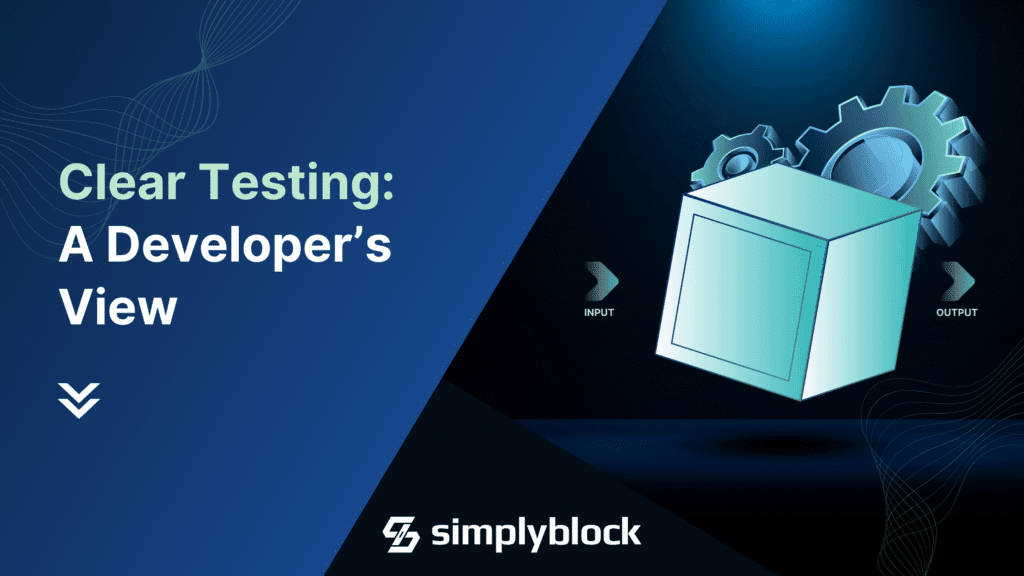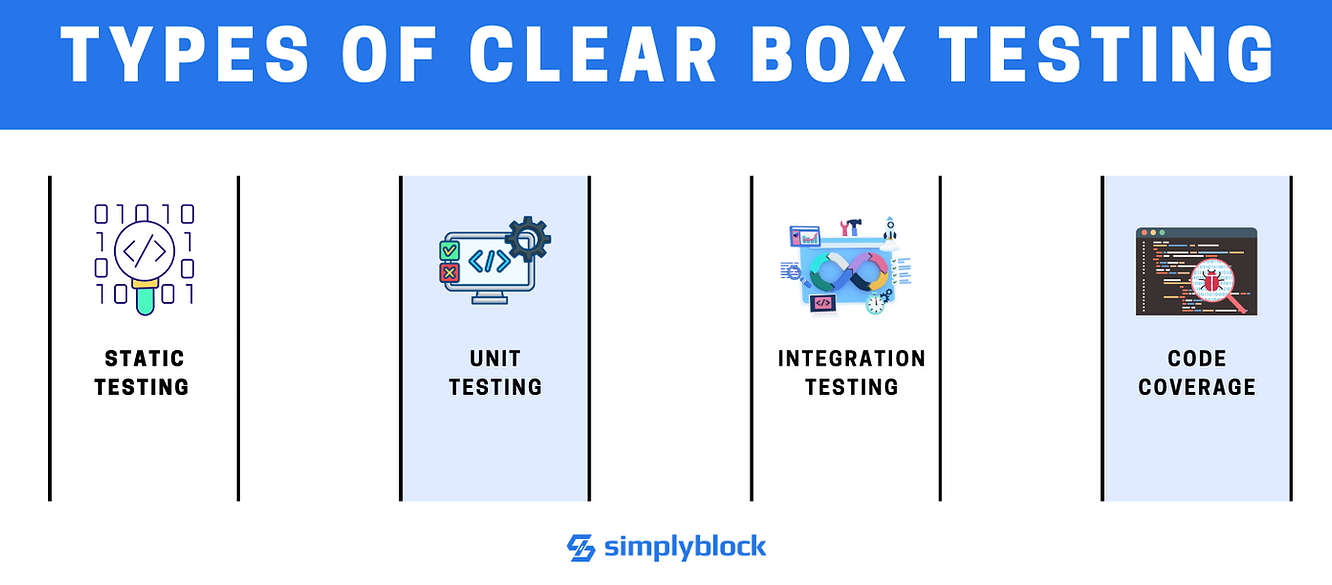Understanding Clear Box (“White Box”) Testing: A Developer’s Guide [2025]
Aug 21st, 2024 | 10 min read

Table Of Contents
Introduction: the Importance of Clear Box Testing
As developers, we play a crucial role in ensuring that applications run smoothly and meet user expectations. Clear box testing, also known as white box testing, is a method that we use to test the internal structures or workings of an application, as opposed to focusing solely on its functionality (which falls under black Box testing). By examining the source code and design, we can ensure that everything functions as expected from the inside out.
We cannot overstate the importance of clear box testing. By scrutinizing the internal workings of software, we can catch potential bugs and inefficiencies early in the development process. This proactive approach helps us deliver robust software, minimizes costly post-release fixes, and enhances user satisfaction by ensuring seamless performance.
Understanding Clear Box Testing
When engaging in clear box testing, we comprehensively examine a software application’s code, algorithms, and control structures. Unlike functional (black box) testing, which focuses on outputs based on given inputs, clear box testing requires us to investigate how the output is generated. We often use this type of testing during the initial stages of software development to ensure the code is clean, efficient, and free of vulnerabilities.
Through clear box testing, we gain insights into code coverage, ensuring that we test all code paths and eliminate any dead or unused parts of the code. By doing so, we improve the quality and reliability of the software, making it more maintainable in the long run.
Types of Clear Box Testing
Clear box testing can be categorized into several types, each serving a specific purpose in the software development lifecycle. Here are some of the main types:
What is Static Testing? (Static Code Analysis):
Static testing involves analyzing the code without executing it. Tools are used to evaluate the code’s syntax, quality, and adherence to coding standards. Code reviews are a crucial part of this process, where developers manually inspect each other’s code to identify potential issues. For example, while working on a new feature for an e-commerce application, a static analysis tool is used to scan the code. The tool identifies a potential security flaw where user input isn’t properly sanitized, allowing the development team to correct the issue before the code is executed.
What is Unit Testing?
Unit testing focuses on testing individual components or functions of the software. Developers write test cases for each function to ensure it performs as expected. This helps in identifying issues at an early stage and allows for easier debugging. For instance, a developer writing a function to calculate the total price of items in a shopping cart would create unit tests for scenarios like an empty cart, a cart with one item, and a cart with multiple items. These tests might reveal that a discount isn’t applied correctly, allowing the developer to fix the bug.
What is Integration Testing?
Integration testing involves testing the interaction between different modules or components of a software application. It ensures that the integrated components work together as intended, without any conflicts or unexpected behavior. For example, integration tests can reveal that transaction failures are not logged correctly when integrating a new payment gateway into an application. Addressing this issue ensures the payment system works smoothly with the order processing system.
What is Code Coverage?
Code Coverage measures the percentage of the codebase that is tested by the test cases. It helps in identifying untested parts of the code, ensuring that all code paths are tested, and improving the overall test quality. For instance, a code coverage tool might show that 85% of the code is covered, but critical functions lack complete test coverage. Developers can ensure more robust testing by writing additional tests for these areas.

Clear Box Testing Techniques
Several techniques are used in clear box testing to achieve comprehensive coverage of the codebase:
What is Statement Coverage?
This technique ensures that every statement in the code is executed at least once during testing. It helps in identifying unreachable code and redundant statements. For example, a statement coverage analysis might reveal that a block of code handling optional user inputs is never executed in a user registration function. Writing additional tests to cover this code ensures all statements are tested.
What is Branch Coverage?
Branch Coverage ensures that all possible branches of decision points (such as if-else statements) are executed during testing. This helps in identifying potential logic errors and incorrect handling of conditional statements. For instance, when testing a permission-checking function, branch coverage would ensure that scenarios where a user has full, partial, or no permissions are all tested. This might uncover a logic error where a specific permission case isn’t handled properly.
What is Path Coverage?
Path Coverage involves testing all possible execution paths in the code. This technique provides a high level of assurance that the software behaves as expected in all scenarios. For example, path coverage testing on a complex algorithm with multiple decision points might reveal an issue in a rarely encountered path that causes unexpected behavior, which can then be fixed.
What is Loop Testing?
Loop testing focuses on testing loops in the code to ensure they function correctly. It helps in identifying infinite loops, boundary conditions, and off-by-one errors. For instance, loop testing on a function processing a list of transactions might reveal an off-by-one error that causes the last transaction to be skipped. By correcting this, the loop can process all transactions as expected.
Tools for Clear Box Testing
Several tools are available for clear box testing, each designed to facilitate different aspects of the testing process:
What is SonarQube?
SonarQube is a popular tool for static code analysis. It helps in identifying code quality issues, security vulnerabilities, and code smells.
What is JUnit?
JUnit is a widely used framework for unit testing in Java applications. It allows developers to write and execute test cases for individual components.
What is TestNG?
TestNG is another testing framework that supports a wide range of testing types, including unit, integration, and functional testing. It offers advanced features like parallel testing, data-driven testing, and dependency management.
What is JaCoCo?
JaCoCo is a code coverage tool for Java applications. It provides detailed reports on code coverage, helping developers identify untested parts of the code.
Best Practices for Clear Box Testing
To ensure effective clear box testing, it’s important to follow certain best practices:
- Write Comprehensive Test Cases: Test cases should cover all possible scenarios, including edge cases, to ensure thorough testing of the codebase.
- Automate Testing: Automation tools can significantly reduce the time and effort required for testing. Automating repetitive tasks allows developers to focus on more complex issues.
- Review Code Regularly: Regular code reviews help in identifying issues early and ensure that the code adheres to quality standards. Peer reviews also foster collaboration and knowledge sharing among team members.
- Prioritize Testing: Prioritize testing based on the risk and impact of different components. Critical components should be tested first to minimize potential risks.
Clear Box Testing in Agile and DevOps
In Agile and DevOps environments, we integrate clear box testing into the continuous development and delivery process. Agile methodologies emphasize iterative development, so we perform testing in parallel with development. This approach ensures that we identify and address any issues early, reducing the time and cost associated with fixing defects later in the development cycle.
With DevOps practices, we focus on automating testing and integrating it into the CI/CD pipeline. This ensures that we automatically test and validate code changes before deploying them to production. Clear Box Testing plays a crucial role in this process by providing us with detailed insights into the codebase and ensuring its reliability.
Future Trends in Clear Box Testing
As technology continues to evolve, clear box testing is also expected to undergo significant advancements. Some of the future trends in this field include:
AI-Powered Testing:
Artificial intelligence and machine learning algorithms are being used to enhance clear box testing by identifying patterns, predicting potential issues, and automating test case generation.
Shift-Left Testing:
Shift-Left testing involves moving testing activities earlier in the development process. This approach helps in identifying defects early and ensures that code quality is maintained from the start.
Enhanced Security Testing:
With the increasing focus on cybersecurity, clear box testing will play a vital role in identifying and addressing security vulnerabilities in the code.
Conclusion
As developers, our commitment to delivering high-quality software is non-negotiable, and clear box testing is one of the most powerful tools at our disposal to achieve that goal. By adopting clear box testing practices, we can thoroughly understand and validate the inner workings of our code, ensuring that every component is robust, efficient, and secure.
Remember, the effectiveness of clear box testing lies in its proactive nature—catching bugs, optimizing code, and ensuring security before issues escalate into costly post-release problems. By integrating these testing practices into your development workflow, you not only improve the reliability and maintainability of your software but also enhance your own skills and confidence as a developer.
As you move forward, continue to explore and adopt the latest tools and techniques in clear box testing, stay vigilant about code quality, and embrace the evolving trends that will shape the future of our industry. Your dedication to these practices will not only result in better software but will also drive innovation and excellence in everything you build.
Questions and Answers
Clear box testing, also known as white box testing, is a software testing method that examines the internal logic and code structure of an application. Unlike black box testing, it focuses on how the system works rather than just the outputs. It’s essential for verifying logic branches, loops, and data flows.
White box testing evaluates the code itself—logic, conditions, and flows—while black box testing focuses on input/output behavior without looking inside. Combining both ensures comprehensive test coverage and helps catch both logic bugs and user-facing issues.
In infrastructure or storage software, such as software-defined storage, internal logic is critical for stability. White box testing helps validate edge cases in replication, snapshotting, or failover mechanisms that are hard to spot through external-only testing.
Simplyblock uses white box testing alongside black box methods to ensure its platform is resilient, efficient, and accurate. Internal checks on storage orchestration, encryption, and CSI integration are tested to catch logic errors before they affect production workloads in Kubernetes or cloud setups.
Absolutely. While DevOps emphasizes automation and rapid delivery, white box testing remains key for catching regressions early in CI/CD pipelines. It enables better debugging, faster issue resolution, and increased trust in complex systems like distributed storage platforms.



